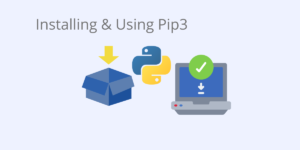

In short, it's just a plain text file stating which packages your application needs from PyPI (Python main package repository) in order to be able to run. We may use the next command to make the requirement."requirements.txt" is a little magic file in Python designed to make our life as developers less miserable. We can obtain the requirements.txt file from this location. Several significant issues can be easily avoided with the “requirement.txt” file’s assistance. Our projects become more transportable as a result of it. Therefore, while creating any project, no matter how big or small, this requirement.txt file. A requirement.txt file lists every type of standard package and library that is utilized in that specific project. It will be helpful to know its contents before creating the requirement.txt file. Creating the requirement.txt File With the Python Path Additionally, you may confirm it by navigating to the project folder or the directory where the relatively new directory with the provided name will be created. We have titled our virtual environment “name _of_environment” in our example, so you can check that it has been formed by looking at the prompt to see that the prefix has been updated. First, make all right that python and pip are mounted on your system.

A virtual environment can be created using a variety of packages that are accessible.

This makes it simpler for each project to operate independently of the others, particularly when they have similar requirements. It enables us to build an isolated, “virtual” environment for all Python schemes. The user’s packages are kept apart from the local (or main) system installation in a virtual environment, which is a kind of artificial or separated workspace. Virtual Environment for the requirement.txt File in Python Site packages, often known as third-party packages, which you install with pip.The Standard Python Library’s System Packages are a component of it.The following files are typically involved: There are two primary types of modules and places where Python modules are typically stored. Since we typically do not need all of these package types while focusing on a particular project, it is important to recognize which one is necessary for each project in order to facilitate reproducibility. Utilizing a virtual environment is one of the common strategies for dealing with this kind of problem. To avoid unpleasant surprises, it’s critical to keep a record of every package we use when the project is excessively large. Consequently, keeping track of each package change would take a lot of time.

Later, the maintainer or package manager might make certain adjustments, and those changes could easily damage your entire application. However, whenever we worked on a project, we frequently used a certain version of the packages. If you’ve ever written a project in Python or worked on one, you know that we typically need many packages. Importance of requirement.txt File in PythonĪs it resolves nearly all compatibility difficulties, it benefits us in several ways, even when we return our project in the future. The reason why we require this kind of file in our projects is raised here, which is yet another crucial question. In most cases, your project’s root directory is where the file “requirement.txt” is kept (or is located). It also keeps track of all the files and programs needed for the project to function or on which it depends.
PIP3 INSTALL REQUIREMENTS TXT HOW TO
This post will explain how to create the requirements.txt file and install dependencies using it.” Definition of requirement.txt File in Pythonĭuring the development of a specific project, libraries, packages, and modules are typically listed in a requirement.txt file, a type of file in Python. To utilize the program, the borrower or end-user merely needs to set up a virtual environment and install any necessary components. When this occurs, programmers include a requirements.txt file in the project that contains a list of all the dependencies that have been installed in the virtual environment as well as information on the version that is being utilized. Because the dependencies are set up in a virtual environment, it would be useless to share the entire virtual environment because the folder size would be enormous, and there would be a risk of integrity problems. The script and dependencies must be installed on the user’s computers for them to utilize the developer. Generally, it is advised to create a virtual environment tailored to the project when developing such massive programs, as well as smaller ones, because doing so enables us to install anything we want and of any version without overburdening the available package space. The number of modules a given application uses can be considerable. “We need to employ a lot of modules while creating Python apps for various functionalities.


 0 kommentar(er)
0 kommentar(er)
